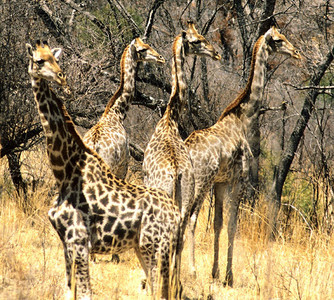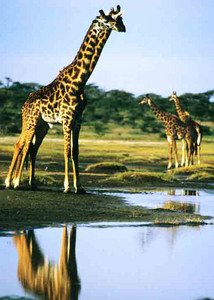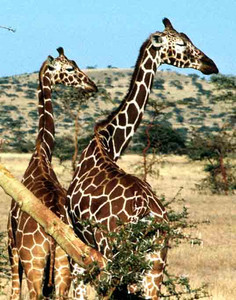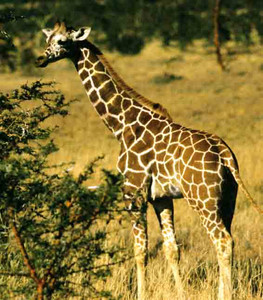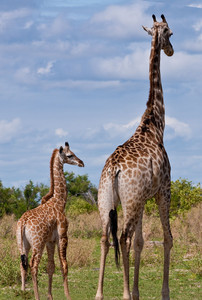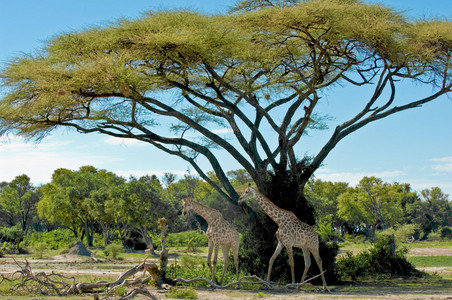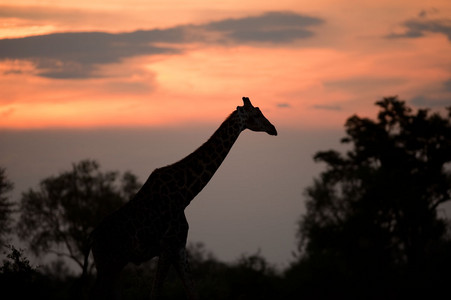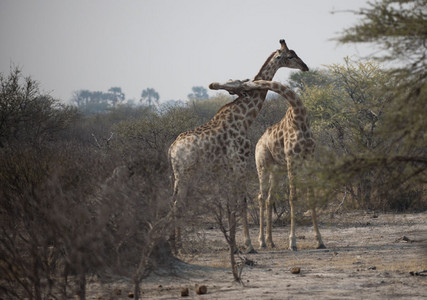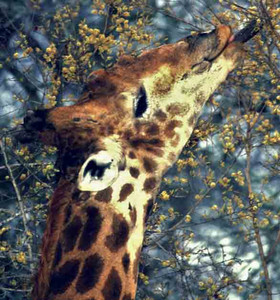
Southern Giraffe
Southern Giraffe: These first 2 images show how deft these animals are in using their tongues to pluck edible leaves from among the bushes' sharp needles. The coat darkens when the giraffe becomes old. [Moremi NP, Botswana].
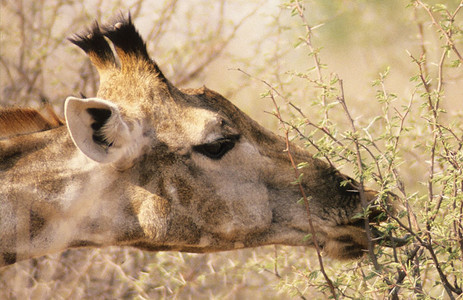
Southern Giraffe
Adult male Southern Giraffe plucking small leaves from the bush with his tongue. [Hwange NP, Zimbabwe].
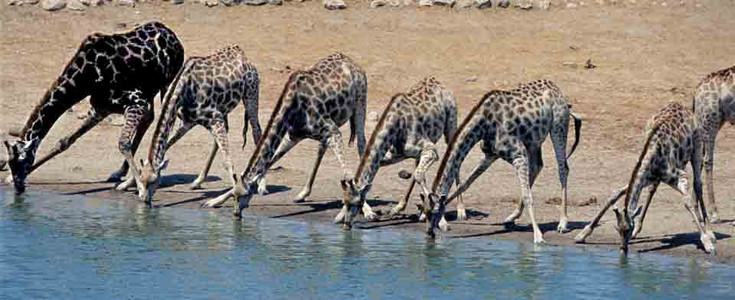
Southern Giraffe
These six Southern Giraffe shows their typically spread-legged means of getting down to the water to drink. Note that the animal on the left, is the largest, and his skin has become dark, indicating that he is old. {Shumba, Zimbabwe].
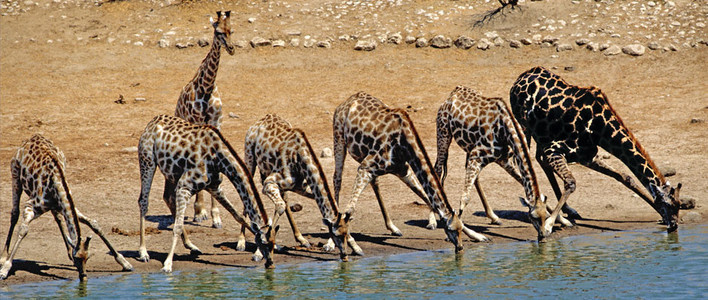
Southern Giraffe
Elderly Southern Giraffe on the right end, with 5 juveniles drinking, plus one youngster standing behind. [Shumba NP, Zimbabwe].
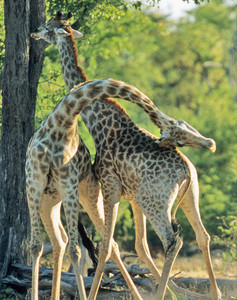
Southern Giraffe
Southern Giraffe: A younger male 'necking' an older male. [Hwange NP, Zimbabwe]. I do not believe that this is sexual behavior. I have seen this several times, and every time it is between two males -- a younger and older male. I believe that it is a gesture by the younger male to ingratiate himself with, or pay homage to, the older member of his group. The younger one is always the more active, i.e., he initiates more of the characteristic gestures of wrapping his neck around the body or neck of the elder animal, and he makes more effort in bending it than the older one does. [Hwange NP, Zimbabwe].
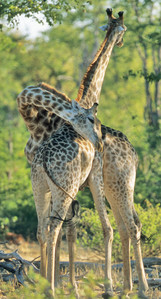
Southern Giraffe
The same two Southern Giraffe males 'necking' as in the previous image. I have seen this performance several times: always two males--one younger/smaller than the other. Some have suggested that this is a sexual act, but I believe it is more an event of the younger animal ingratiating himself with the older male. (See text of previous image). [Hwange NP, Zimbabwe].
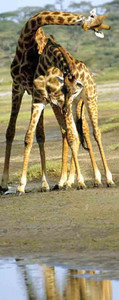
Masai Giraffe
Two male Giraffes 'necking'. Please see previous first 2 images for my discussion of this event. [Serengeti, Tanzania].
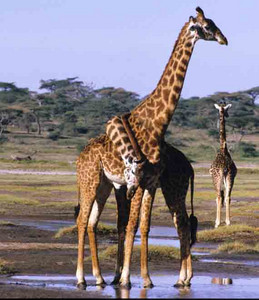
Masai Giraffe
Masai Giraffe: A younger male 'necking' to an older member of the group. Please see previous text for fuller explanation. [Serengeti, Tanzania]
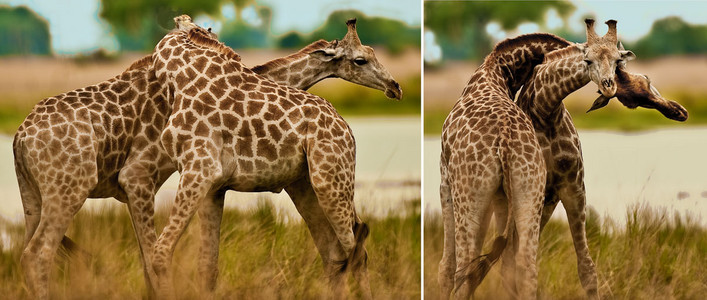
Southern Giraffes Necking
This double image, and the next image, show two Southern giraffes 'necking'. The performance is much like I have seen in East Africa and in other Southern African countries. The only difference is the degree of participation in the exercise by the older (usually) animal. I believe that it is a gesture of homage by the younger animal to the older male. I do not believe that it is a sexual event.[Botswana]. (Please see next double image)....
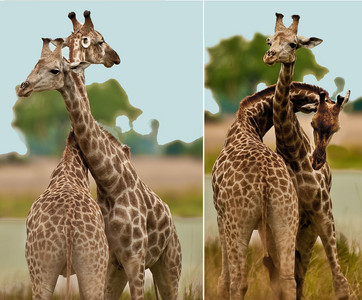
Southern Giraffe Necking
These two images, and the preceding, are young males who appear to be close in age. They both seem to be equally vigorous. [Botswana]. (Please see previous image and its text).
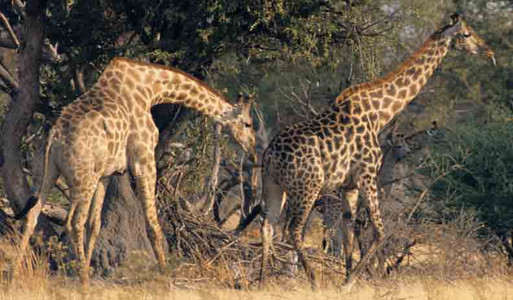
Southern Giraffe
Southern Giraffes: adult female in front, her youngster following. [Matopos NP, Zimbabwe].
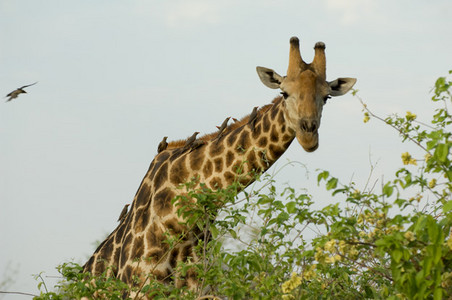
Southern Giraffe
This Southern Giraffe male (one can tell it's a male because of the white tufts on the top of its horns) was browsing the vegetation, and the Red-Billed Oxpeckers were browsing the giraffe. Note another one is just arriving .The birds were cleaning the giraffe's fur of insects--beneficial for the giraffe, but somewhat painful, because of the birds' sharp beaks. There were about 13 birds on his neck.[Kwando, Botswana].
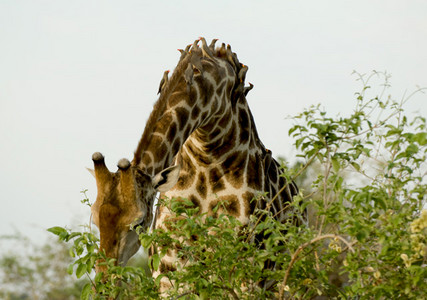
Southern Giraffe
There must have been at least 20 Red-Billed Oxpeckers on this Southern Giraffe male's neck. I wonder if the reason they're all crowded where the neck bends is because the fur, being somewhat stretched in this area, makes it easier for the birds to find the insects. [Kwando, Botswana].
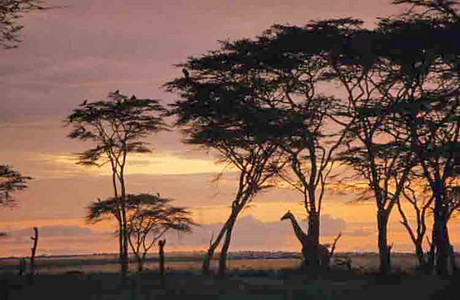
Masai Giraffe
Masai Giraffe wandering through our camp early one morning. Note Marabou Storks are still in the trees. [Serengeti, Tanzania]
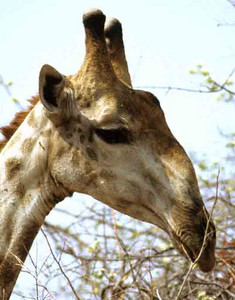
Masai Giraffe
One can tell it's a male Masai Giraffe because of the white caps on the top of his horns. [Matopos NP, Zimbabwe].
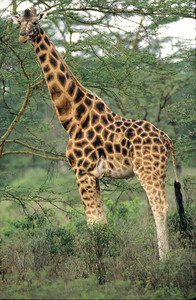
Rothchild's Giraffe
Rothchild's Giraffe: A subspecies (able to interbreed with the others and produce fertile progeny). Sometimes called 'Uganda Giraffe'. [Samburu, Kenya].
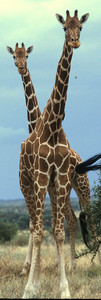
Reticulated Giraffe
Two young adult male Reticulated Giraffes. Note the difference in the fur pattern. [Samburu, Kenya]
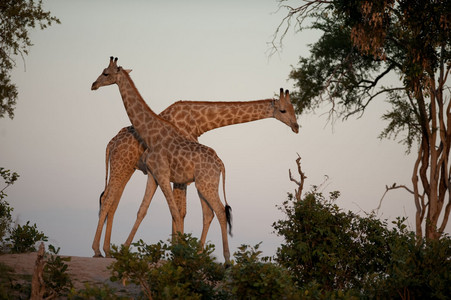
Two Southern Giraffes
Two Southern Giraffes passing in opposite direction on a ridge form a nice 'x', but the one on this side is smaller (younger), compromising the effect. [Botswana].
